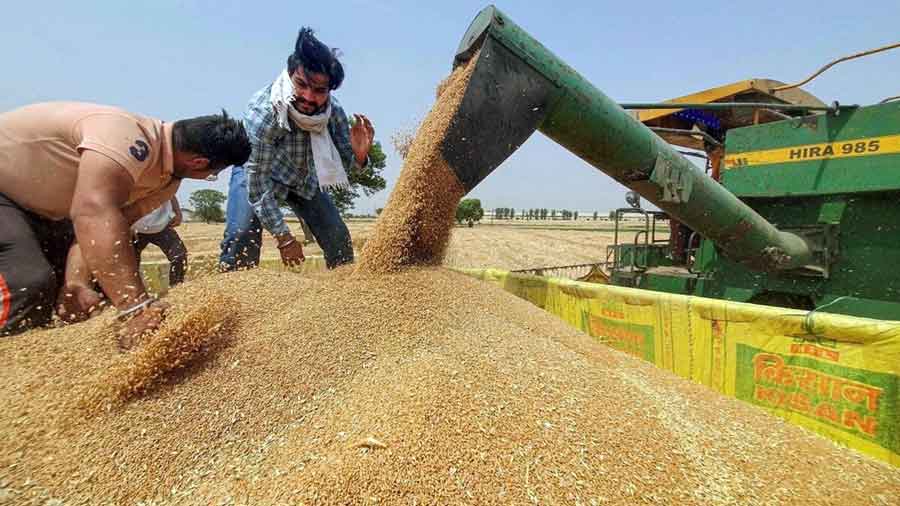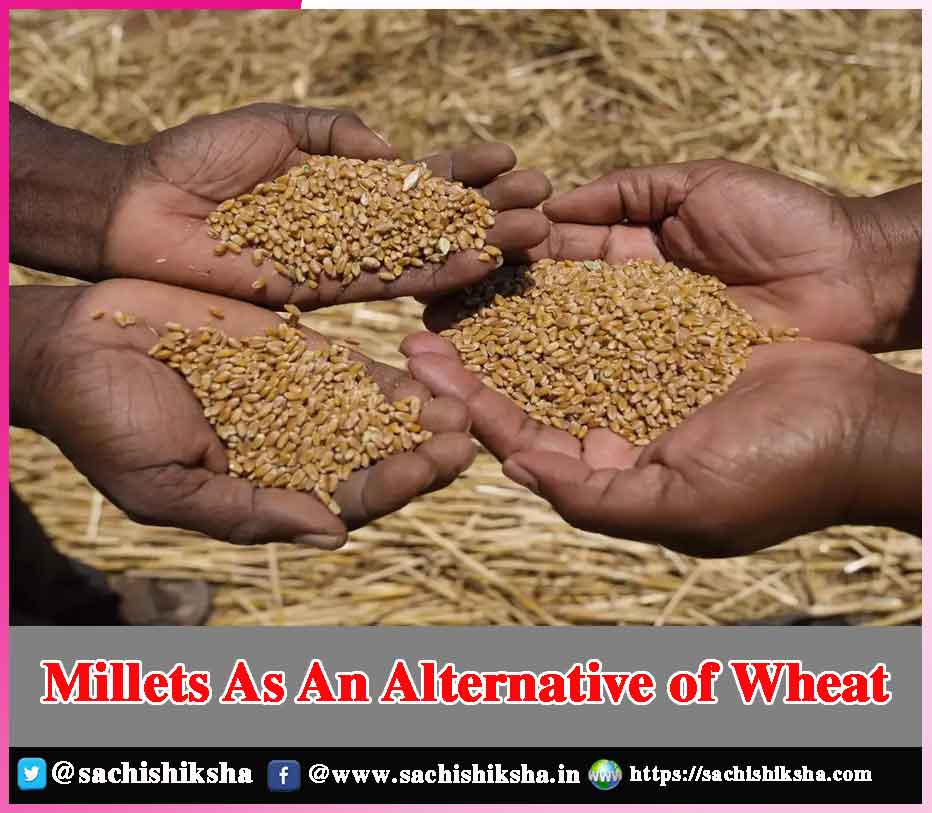Millets As An Alternative of Wheat
Introduction: There are several factors that make nutrition a challenging one to get out of, as things can frequently become complicated due to numerous shifts. The simplest option is to follow the established practice.
With the United Nations declaring 2023 the International Year of Millets, one of India’s initially ingested small grain cereals is now receiving prominence as a ‘Super Food’ due to their health-promoting properties. Surprisingly, millets, now known as over analyzing-cereals, were driven from our plates during the Green Revolution of the 1960s due to expanded rice and wheat farming.
Also Read:
- Food Security
- The Age Of Ambition
- Basics of Stock Market
- India’s Unicorn Boom
- Union Budget 2022: Betting Big on Infra
- Food Security in India
Table of Contents
As an Investment in Food Processing Industry:

Wider Scope of Millets:
However, along with to having made an appearance in Indian diets, millets have gained favour in the West due to their gluten-free nature as well as their protein, fiber, and antioxidant qualities. Millets, which are extensively farmed for consumption by humans and animals around the world, have been shown to be more nourishing than several grains. Customers’ understanding of allergies to gluten is increasing on a daily basis.
As an Alternative of Wheat:
Yet many people are skeptical since how can we suddenly grow wheat intolerant? But gluten sensitivity is extremely real and feasible due to the increased usage of fertilizers and pesticides in hybrid varieties of wheat. However, the solution to this issue is ‘millets,’ which are not only free of gluten but also organically treat this problem as well. We may enjoy this nutritious delicacy in a variety of exquisite ways, thanks to new and inventive methods of cooking. Nowadays, numerous medical issues have arisen as a result of poor eating habits. That is why people are aiming to instill excellent nutrition practices in the lives of their kids.
As an Healthy Nutritional Makeup:
Because millets have a healthy nutritional makeup, they have historically been the cereals initially fed to infants. Indeed, millets have the ability to safeguard us from a variety of behavioral illnesses and threats to the environment.With rice and wheat’s a long-standing recognition, and their widespread use in everyday meals and prepackaged food products, experts argue that different foods are needed to fill the dietary hole produced by the excessive consumption of just a few kinds of grains. This is significant since an absence of variety in nutrition is one of the leading causes of malnutrition worldwide, in addition to throughout India.
As an Balanced Diet:
With the distinctive security towards nutrition and complete balanced diet, millets cover all the significant aspect and characteristics according to Dr. B Dayakar Rao, lead scientist at IIMR. They are high in complicated carbohydrates, soluble fiber, and phenolic substances and phyto nutrients with therapeutic potential. Millets are an organic supplier of iron, zinc, calcium, and other elements that are critical for combating malnutrition in India.” Furthermore, millets are gluten-free grains, which are important given the rising prevalence of celiac disorder and gluten sensitivities, which limit or completely prevent the use of wheat.
Negligence of Millets:
Although their well-documented perks, millets are still produced and consumed in small quantities. Absence of awareness is a major contributor to poor intake, along with a variety of other reasons such as unbalanced food culture, arduous processing after harvest, technical obstacles, and a desire for increased government assistance.
Rich in Soluble & Insoluble Fibres:
Millets include both insoluble as well as soluble fibers, both of which are vital for our intestinal health. These fibers aid in digestion, constipation, gas, and weight management by streamlining our gut activities. The fiber in millets helps to reduce glucose and blood glucose surges, which help us feel fuller for longer, giving a continual supply of energy, especially for those with high needs for energy, such as sportsmen and athletes.
Mainstays Throughout Asia & Africa:
Millets have long been significant mainstays throughout Asia and Africa’s semi-arid tropics. These crops remain the primary sources of energy, protein, vitamins, and minerals for millions of the region’s poorest residents. Millets are produced in tough settings where other crops struggle with development or yield. In many countries, they are farmed with limited supplies of water and without the use of fertilizers or additional supplies by a large number of small-scale farmers. As a result, they are mostly eaten by underprivileged communities; they are also known as “coarse grain” or “devastated individuals grains.” They are rarely traded on global or even domestic marketplaces in many nations.
Varieties of Millets:
Farmers rarely have a certain buyer in the case of excess produce. Sorghum, Pearl millet, Finger millet, Foxtail millet, Common millet, little millet, Barnyard millet, and Kodo millet are among the grains. India is the world’s biggest supplier of millets. Sorghum, Pearl millet, Finger millet, Foxtail millet, Kodo millet, Proso millet, Barnyard millet, and little millet are the most frequently farmed millets in India.
Millets Have Confirmed Health Advantages:
- Millets have a low calories amount and are an ideal diet for losing weight. It aids people who are concerned about their health as well as those who are trying to shed weight. It allows individuals to sustain their level of energy during the day without constantly consuming food to recharge them.
- Millets help maintain the sugar levels in the blood stable to low glycaemic index.
- Millets contain necessary fats, which offer our bodies a supply with beneficial fats, preventing excessive accumulation of fat and successfully lowering the possibility of high cholesterol, strokes, and other cardiovascular diseases.
- Millets contain magnesium, which can help reduce the frequency of headaches. It may also lessen the intensity of your asthma symptoms.
Recognition of its Benefits:
Considering the existence of increasingly common grains such as rice and wheat, millets slipped under the spotlight. It wasn’t until lately that fitness and health enthusiasts all around the world realized the benefits it could provide. The health advantages provided by the modest cereal grain are very remarkable.
Conclusion: Millet agriculture, unlike wheat and rice, is extremely durable. This food grain assists our bodies by boosting immunity, preventing sickness, and promoting weight loss. There are numerous methods to incorporate millets into your diet. The nutritious grain can be used as a cereal replacement, to make oatmeal, or to incorporate into brownies – the possibilities for millets in gastronomy are unlimited. So incorporate this nutritional powerhouse into your daily diet and observe the wonderful effects it has on your daily existence.















































